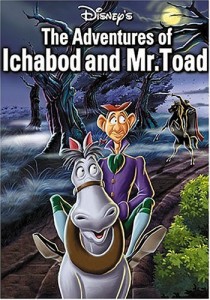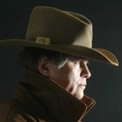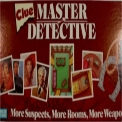Friday, April 3: Bandersnatches
THE LEGEND OF WASHINGTON IRVING
by Steve Steinbock
In my column a few weeks back I mentioned Washington Irving. The context was random and roundabout, and involved Irving’s story “The Devil and Tom Walker” and how may have inspired Benét’s “The Devil and Daniel Webster,” and how Noah Webster (no relation to Daniel) codified American spelling changes.
 I’ve been thinking about Irving, and pulling some of his books off my shelves. “Rip Van Winkle” is often referred to as the first “American short story,” so it strikes me that this may be a perfect forum for discussing that nineteenth century writer.
I’ve been thinking about Irving, and pulling some of his books off my shelves. “Rip Van Winkle” is often referred to as the first “American short story,” so it strikes me that this may be a perfect forum for discussing that nineteenth century writer.
It is a downright dirty shame that modern readers know so little about Washington Irving (1783-1859). One could make the case that his work pales in comparison to those who came after him. So what? He was a trailblazer, and something of a mentor to many American writers, including Poe. (Poe sought Irving’s opinion on several of his stories, asking for what today we would call “blurbs,” but later wrote that Irving was “over-rated”).
 Irving is known today primarily by way of the silly Disney film, “The Adventure of Ichabod and Mr. Toad” or the interesting but twisted Tim Burton hallucination of “Sleepy Hollow.” The Disney interpretation bears no resemblance to Irving’s original story. (See JLW’s 2007 Scribbling on the subject, in which he presented “The Legend of Sleepy Hollow” as Irving wrote it and not as popular media have distorted it.) And the juxtaposition of Ichabod Crane with Kenneth Grahame’s character’s is out-and-out wacky.
Irving is known today primarily by way of the silly Disney film, “The Adventure of Ichabod and Mr. Toad” or the interesting but twisted Tim Burton hallucination of “Sleepy Hollow.” The Disney interpretation bears no resemblance to Irving’s original story. (See JLW’s 2007 Scribbling on the subject, in which he presented “The Legend of Sleepy Hollow” as Irving wrote it and not as popular media have distorted it.) And the juxtaposition of Ichabod Crane with Kenneth Grahame’s character’s is out-and-out wacky.
“The Legend of Sleepy Hollow,” far from being a horror story, is a Scheherazadian exploration of storytelling with a very funny twist ending. In fact, it reads like a nice April Fool’s joke. It appeared in a book of Irving’s essays that the author called The Sketch Book of Geoffrey Crayon, Gent. Published in 1820, The Sketch Book is more travelogue than storybook, relating Irving’s observations while traveling in England and Scotland. It’s a “sketch-book” in the way that a modern traveler might bring a Moleskine along on a holiday, sketching countryside scenes and old churches, and jotting down memories and observations. Irving’s “sketches” remind me of the travel diaries Robert Louis Stevenson would write while traveling America a generation later.
In May, 1815, Irving sailed for Liverpool. Over the next seventeen years, he worked, traveled, and wrote from Europe and Britain. Although The Sketch Book of Geoffrey Crayon, Gent includes two essays about American Indian culture and character written before his voyage, I believe that the rest of the Sketch Book was written during his travels.
The two “American” stories – “Rip Van Winkle” and “The Legend of Sleepy Hollow” – are both attributed to the fictional “Diedrich Knickerbocker” (see below), and are the least characteristic of the pieces in The Sketch Book.
(The bizarre Modern Library edition of The Sketch Book is re-titled The Legend of Sleepy Hollow and Other Stories. Makes me wonder if the editors ever read the book before they published it. The cover features an inexplicable blurb provided by Stephen King: “Washington Irving. . . makes Nathaniel Hawthorne read like Dr. Seuss!” Huh? I must be missing something.)
Irving’s earlier A History of New York (1809) was written under the pseudonym Diedrich Knickerbocker, which in itself has an interesting story. Prior to its publication, Irving began planting hoax letters and news stories about the disappearance of Mr. Knickerbocker and the strange manuscript found in his apartment. The style and contents of A History is light, witty, and anything but historical.
Irving was nearly as unhistorical – but not nearly so witty – when John Jacob Astor, America’s first millionaire, commissioned him to write Astor’s biography. The result is Astoria, an overblown and romanticized account of Astor’s establishment of the trading post at the mouth of the Columbia River. (More notable about Astoria is that it is the setting of the films “Kindergarten Cop” and “The Goonies” and is my birthplace).
But enough about Irving.
Hope you had a good April Fool’s Day. See you in a week.




















Thanks for the education. You taught me several interesting things about Irving.
I enjoyed this and also learned a lot about Irving.
Your final mention of April Fool’s Day reminded me of a hilarious post by O’Neil DeNoux on the Short Mystery Forum. When not writing mysteries he is a university policeman. For an April 1 joke, some of them put tape on the bottom of the captain’s computer mouse, then when he was fussing and fuming told him it was because of the worm that was supposed to hit that day. One of them told him the problem could be fixed by restarting his computer 16 times, then they all were laughing as they heard him doing it. As DeNoux pointed out, it was a dangerous trick to pull on an older man with a gun.
Unlike some 19th century authors, Irving is still a lot of fun to read. I’ve always thought of Mad Magazine as a descendant of Diedrich Knickerbocker’s work.
Ichabod and Mr Toad? When will the UN come to their senses and outlaw the Disney COrporation?
Also filmed or supposedly set in Astoria are Short Circuit and Free WIlly, but Jan Bono notes that in the latter the young bicycling hero “leaves his home high on a hill in Astoria and crosses the Hawthorne bridge in Portland to the amusement rides at Oaks Park, which is now located at Ecola State Park outside Cannon Beach. On the way, he stops to chat with the fish sellers from [Seattle’s] Pike Place Market, who are temporarily flinging salmon on the dock in Astoria….” Sounds like Mr Toad would fit in just fine.
Irving’s house is interesting. An American President (I think Martin Van Buren, don’t quote me!) owned it, and so did the American Grandfather of Sir Winston Churchill. I read once about a kid having Irving’s “Legend Of Sleepy Hollow” read aloud to him and his class inside that house…